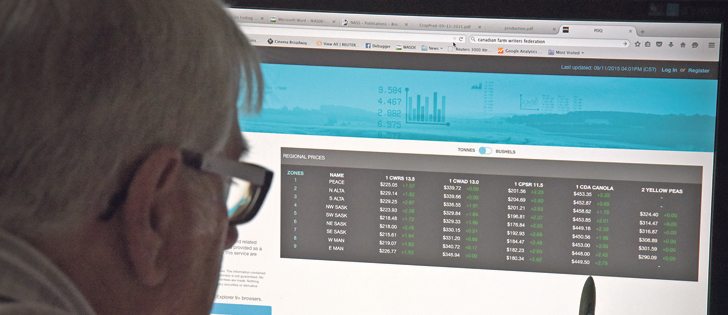PDQ has been working slowly and quietly to compile prairie grain price information.
It hasn’t been flashy, but the online, public system at www.PDQInfo.ca has been growing into its place in the marketplace.
“It’s a really good tool for industry, for all of us,” said Dan Mazier, president of Manitoba’s Keystone Agricultural Producers.
“It’s very necessary, and it’s a good tool to have in our arsenal to analyze the industry when it comes to grain pricing.”
Read Also

Critical growing season is ahead for soybeans
What the weather turns out to be in the United States is going to have a significant impact on Canadian producers’ prices
Alberta Wheat Commission operates the PDQ system, which offers prices for base grades of wheat, durum, canola and peas from eastern Manitoba to the Peace River country of northwestern Alberta.
The prices are updated every day and offer a regional price for nine areas.
Caalen Covey, the wheat commission’s marketing manager, said the PDQ system plans improvements, including prices for more crops and to make the website easier to use.
“We want to have it so that you can go in and easily chart out historical prices and maybe deferred prices as well,” said Covey.
Historical prices and deferred prices are already available on the site, but Covey said some users don’t realize everything that’s there or how to interact with it.
The agency also wants historical price information to be downloadable so that users can easily plug it into Excel spreadsheets.
Two thousand registered users are going deep into the data after more than a year of operations, but there are likely many more who just check the home page to see contemporary prices for the crop classes. Some visitors might not even realize they can delve deeper into the site’s data.
Current prices are features on the website’s home page, but Covey thinks the most valuable feature will become the longer-term price trends. That information is slowly building up and will become more useful as years pass.
Adding more crops appears to be a key hope for many farmers.
“I think it would be great to have oats to be able to see what the average prices of oats are in various parts of the country,” said Shawna Mathieson, executive director of the Prairie Oat Growers Association.
Covey said the wheat commission is often asked for barley price information, which isn’t yet compiled by the PDQ system. Feed wheat prices are also often sought.
Mazier said he was pleased recently to hear people referring to PDQ prices when discussing prairie elevator bids.
That’s a good sign because it is providing something to which local offers can be compared.
“It is a valuable tool in figuring out what those bids are out there,” said Mazier.
That’s exactly how the commission hopes the system operates: offering a benchmark to which other prices can be compared.
“Our hope is that it will be that base line price,” said Covey.


















